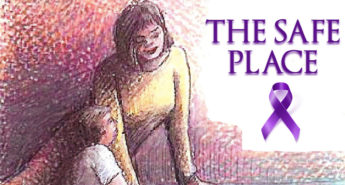 Soon, the halls of the schools will be filled with children laughing and giggling. They will be talking to their friends and making plans for who is sleeping over next weekend. There will be many hugs and a lot of smiles. However, for some children returning to school means returning to bullying, being picked on, being left out, or not feeling loved, accepted, or wanted. Over 160,000 kids refuse to go to school each day for fear of being bullied. Yet, 64% of students who are bullied do not report it.
Soon, the halls of the schools will be filled with children laughing and giggling. They will be talking to their friends and making plans for who is sleeping over next weekend. There will be many hugs and a lot of smiles. However, for some children returning to school means returning to bullying, being picked on, being left out, or not feeling loved, accepted, or wanted. Over 160,000 kids refuse to go to school each day for fear of being bullied. Yet, 64% of students who are bullied do not report it.
Bullying is physical or verbal aggression that is repeated over a period of time and involves an imbalance of power. This happens in schools around this country every year. While most do not want to accept the facts, it happens in every school, every year.
Different types of bullying can include physical, verbal, relational, reactive, or cyberbullying. Physical bullying involves but is not limited to hitting, kicking, pushing, or otherwise fighting others. Each month 282,000 students are physically assaulted in some way in secondary schools throughout the United States, and the number is growing.
Verbal bullying is intended to degrade or demean the victim in some way, so the bully feels powerful or strong. It can occur on its own or in conjunction with other forms of bullying. Though it happens more frequently among girls, this type of bullying can happen with boys as well, and it can be just as damaging as (or even more damaging than) physical bullying. A bully might target a specific child because of things like weight, gender, race, appearance, or height, or for some other reason entirely.
Relational bullying is a different way of bullying than the other types of bullying because the actions are usually quiet and hidden from others and happen between friends. Mean letters, gossiping, rumors, slamming books, silent treatment, eye-rolling, withdrawing friendship, threatening to end a friendship, telling others secrets, or telling a boy/girl about a crush a friend has on them, are all examples of relational bullying.
Reactive bullying is when an individual portrays themselves as the victim when they are, in fact, the bully. This can make it hard to identify reactive bullying. Reactive Bullies have usually been the victim of bullies one time or another. Their actions are a way to act out and to create their “new found identity.”
Social media plays a role in cyberbullying. Most kids are on Snap chat, Tic Tok, YouTube, or other social media platforms, and they put their hearts out there hoping for likes, hearts, or acceptance. If someone does not like what is posted, they can get mean and ruthless in the comments. Kids on YouTube are the most likely to be cyberbullied at 79%, followed by Snap chat at 69%, Tik Tok at 64%, and Facebook at 49%.
As teens and young adults spend more time online, cyberbullying has become a significant issue. The fact that perpetrators hide behind screens does not make the effects of cyberbullying any less damaging to those involved. Teens themselves agree that cyberbullying is a major problem but do not feel like those in charge are doing enough to address it. Anti-bullying organizations and campaigns aim to educate and empower people to prevent and handle cyberbullying. Still, the overall feeling from today’s youth is that social media companies and our elected officials should do more to prevent cyberbullying and protect kids online.
A few steps to prevent or stop bullying:
#1 Act with awareness, calm, respect, and confidence. People are less likely to bother you and more likely to listen to you if you walk, sit, and act with awareness, calm, respect, and confidence.
#2 Leave in a powerful, positive way. The best self-defense tactic is called “target denial,” which means “don’t be there.” Leaving an unsafe situation is often the wisest and most effective solution for getting away from trouble.
#3 Set boundaries about disrespectful or unsafe behavior. Remind children and teens that your values are to have a welcoming and safe environment for everyone and that being cruel or hurtful is wrong whether it happens in person, on social media, texting, online, or in any other way.
#4 Use your voice. Most young people who are being hurtful to others on purpose don’t want to get caught. Yelling and speaking up loudly calls attention to a bullying problem or any kind of unsafe behavior.
#5 Be persistent in getting help from busy adults. Children and teens who are being bullied need to be able to tell teachers, parents, and other adults in charge what is happening at the moment clearly and calmly and persistently, even if these adults are very distracted or rude-and even if asking for help has not worked before.
As parents or guardians of a child who is the bully, it is your responsibility to help your child overcome that behavior. Kids bully for many reasons. Some bully because they feel insecure. Picking on someone who seems emotionally or physically weaker provides a feeling of being more important, popular, or in control. In other cases, kids bully because they simply don’t know that it’s not OK to pick on kids who are different because of size, looks, race, or religion.
Take bullying seriously. Teach your children to treat others with respect and kindness. Teach your child that it is wrong to ridicule differences like race, religion, appearance, special needs, gender, or economic status. Encourage good behavior and help them work through anger and aggression.
If you or someone you know is being bullied and you would like to talk or want tips on dealing with bullying, don’t hesitate to get in touch with the Child Advocate at The Safe Place at 501-354-1884. If you or someone you know is in an abusive relationship, you can contact The Safe Place at 1-888-554-2501 or the Perryville office at 501-889-2030.




Leave a Reply